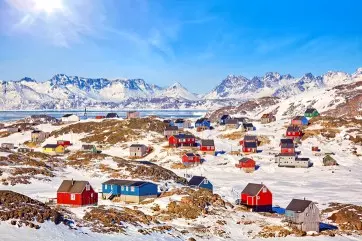
Why is Trump keen to 'acquire' Greenland? There's a method to the madness
It’s not just about the resources; Greenland’s location is pure gold for international travel and military strategy

Airspace navigation fees might not sound like the most exciting topic, but dig a little deeper, and you’ll find they have a surprising role in global geopolitics. For instance, the United States only charges airspace navigation fees after a certain threshold of monthly usage, giving infrequent operators a free pass.
Meanwhile, countries like China and Russia take a very different approach. "Every time you enter their airspace, you’re charged – often at a hefty rate. Consider this: a flight from Anchorage, Alaska, to Narita, Tokyo, crossing Russian airspace could rack up about $1,200 in navigation fees and another $1,800 for terminal navigation aids, depending on the distance. Those fees add up quickly," said a report in The Economist.
Also read: Can US grab Greenland, Canada, Panama Canal? Decoding Trump’s ‘threats’
Geopolitical win-win
Now, let’s take a broader view. Greenland, with its 53,000 residents and treasure trove of untapped resources, is becoming a hotspot of strategic interest. It’s not just about the resources; Greenland’s location is pure gold for international travel and military strategy.
Imagine this: if the US offered each Greenlander $1 million to join the United States as the 51st (or maybe 52nd?) state, it could turn into one of the biggest peaceful expansions since the Louisiana Purchase. Yes, that’s a hypothetical scenario, but the benefits would be monumental. Not only would it secure vast resources and create alternative airspace routes bypassing Russia, but it would also put a dent in Russian revenue from navigation fees. Talk about a geopolitical win-win!
Not a new discovery
Greenland’s importance isn’t a new discovery. The US has had its eye on the island for decades. Back in 1940, American troops landed there to thwart a potential Nazi invasion after Germany occupied Denmark.
Fast forward to 1946, and President Harry Truman offered Denmark $100 million in gold for Greenland. Denmark said no, but they did agree to a US military presence that became a critical part of NATO’s Cold War defence strategy. That evolved into today’s Pituffik Space Base, home to an early missile warning system and strategically located on the shortest flight path between Europe and North America.
Fast forward again to January 7 of this year, and Donald Trump Jr.’s visit to Greenland has tongues wagging. Could there be renewed US interest in the island? It’s not a wild idea, especially since former President Donald Trump floated the idea of buying Greenland in 2019.
Also read: Trump says buying Greenland a large real estate deal, but it's not for sale
Growing strategic value
Back then, the notion was dismissed, but the island’s strategic value has only grown. And it’s not just politicians showing interest. Airlines have been aligning themselves with Trump-related causes—United Airlines, for instance, just announced a $1 million donation to Trump’s inaugural fund yesterday. Coincidence? Maybe. Or maybe it’s all part of a bigger plan.
So, what’s next for Greenland? Whether it becomes a US state or strengthens its role as a strategic partner, its significance is undeniable. A potential Trump 2.0 administration might seize this opportunity to make Greenland a cornerstone of US strategy in the 21st century. One thing’s for sure: Greenland’s role in global geopolitics is far from over, and we’ll be keeping a close eye on how this story unfolds.

